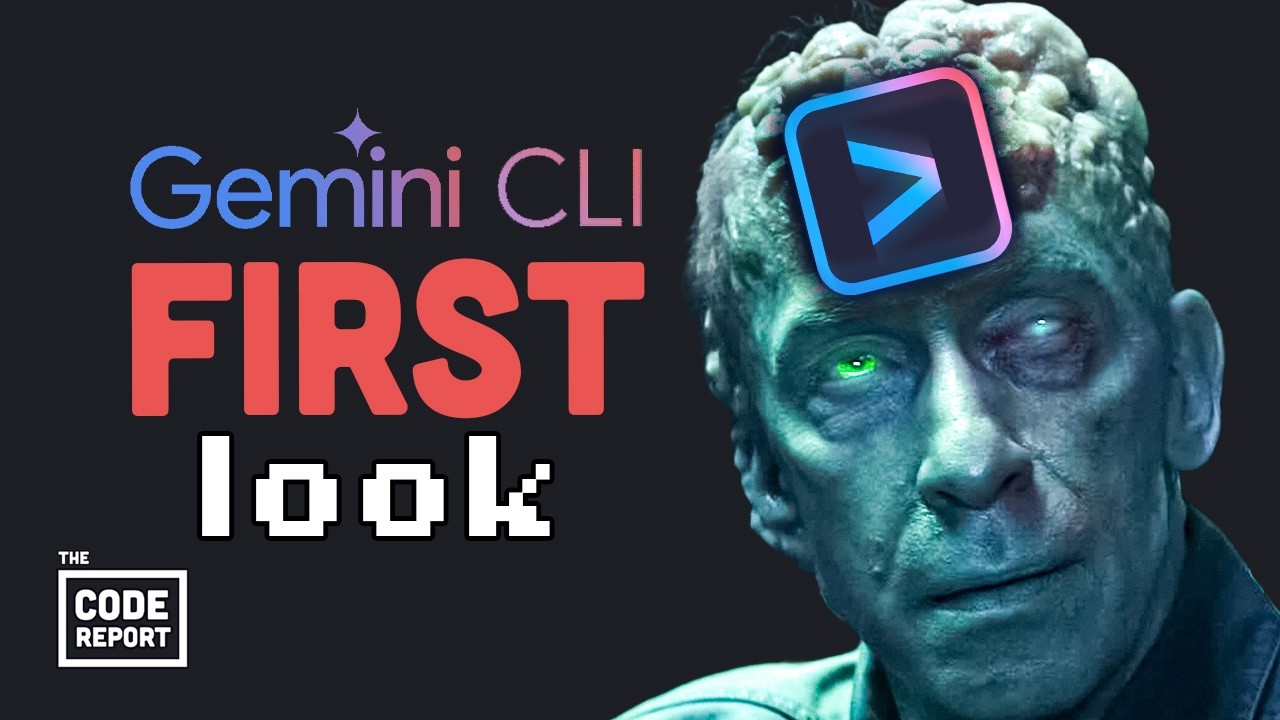Google’s new Gemini CLI tool offers an open-source, generous free-tier alternative for AI-assisted coding, allowing developers to automate tasks and build projects directly from the command line, though it currently has some rough edges compared to established tools like Claude Code. Despite initial challenges, Gemini shows promise for growth and wider adoption, especially given its accessibility and cost advantages, while the video also highlights MX, a video infrastructure platform with a free tier and developer-friendly features.
The video discusses Google’s new Gemini CLI tool, which brings the Gemini AI model to the command line, allowing users to automate coding tasks, create files, and execute commands. While Google is late to the game compared to existing tools like Claude Code, OpenAI Codex, and Warp, Gemini stands out because it is fully open-source and offers a very generous free usage tier—up to a thousand model requests per day. This is a stark contrast to competitors like Claude Pro Max Ultra, which can cost around $200 per month for similar usage.
Claude Code currently dominates the AI coding CLI space, having been the first major player to release such a tool. However, it has two significant drawbacks: it is closed-source and extremely expensive. Many developers have reportedly spent thousands of dollars on Claude Code without generating enough revenue to justify the cost. Anthropic, the company behind Claude, recently introduced a feature called Artifact Space, which allows users to share and fork coding artifacts publicly, fostering collaboration and learning from failures.
For those who find Claude Code cost-prohibitive, Gemini offers a compelling alternative with its free tier and open-source nature. The video demonstrates how to install Gemini via npm and run it in the terminal, where it can build projects and execute commands after user approval. The host tests Gemini by asking it to build an app using the new Spell 5 and Runes syntax. While Gemini produces good quality code and successfully uses the new syntax, it struggles with running the app due to build tool configuration issues, particularly with Vite, a common pain point for web developers.
Despite some rough edges and a less polished experience compared to Claude Code, Gemini shows promise. After some debugging attempts, the host manages to get a working tic-tac-toe game built by Gemini. The video suggests that if Google follows its usual pattern, Gemini could improve significantly over time and gain widespread adoption, although there is a risk it might be discontinued later. For now, Gemini’s combination of open-source accessibility and generous free usage makes it a tool worth considering for developers.
The video also includes a sponsor message for MX, a video infrastructure platform that simplifies video integration with features like hosting, encoding, adaptive streaming, analytics, and live streaming through an API. MX offers a free tier with 10 videos and 100,000 delivery minutes per month, making it suitable for both new projects and large-scale applications. The host encourages viewers to try MX for free with an additional $50 credit, highlighting it as a valuable resource for developers working on video-enabled applications.
